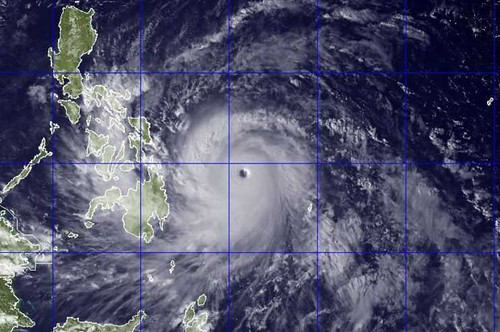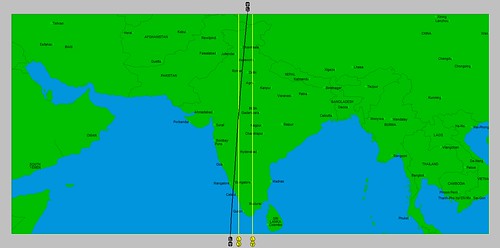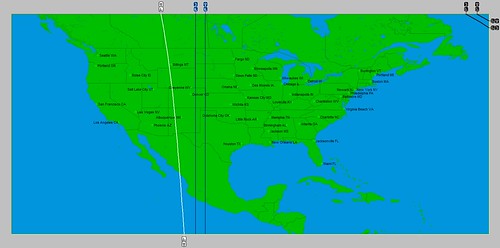On November
8th, Typhoon Haiyan slammed into the Philippines killing over 10,000
people. Here, over the years on the pages of the Weather Alternative, I’ve made numerous accurate long-range forecasts
naming the dates and places of hurricane formations and landfalls months in
advance. The links below provide the specifics. My work is based on the work of
Johannes Kepler, who was convinced of the truth that the alignments of the
planets in our solar system affect weather patterns here on Earth.

As I
reviewed the different planetary alignments at the time of Typhoon Haiyan’s
landfall over the Philippines, I came across an interesting “key” that I think
will be instrumental in future forecasts. That key has to do with our closest satellite,
the Moon. In astro-meteorology, the Moon has long been known as an important
timing factor in long-range weather forecasting, the distributor of moisture,
and the celestial trigger that activates other planetary alignments. The Moon,
as a weather forecasting tool, has been expertly explored by long-range weather
forecaster Ken Ring of www.predictweather.com
Besides orbiting
the Earth every 27.32 days, the Moon also varies in its closeness to Earth. Its
closest approach to Earth is called perigee, and its farthest distance from the
Earth is termed apogee. This aspect of the Moon’s orbit is referred to as the
anomalistic month, which is 27.55 days in length. The Moon also moves north and
south of the equator in its orbit at the same time. At some point in the month,
the Moon will reach its highest north declination and then begin to head south.
After it reaches its southern most declination it begins to head north again
and repeat the cycle.
Each one of
these cycles is important in long-range weather forecasting. At times, these
cycles can overlap each other for a while, and when they do, the lunar influence
is even stronger than usual. This is exactly what was happening during Typhoon
Haiyan’s landfall over the Philippines. Around November 7th, the
Moon was at its closest approach to Earth (perigee) and at its
southernmost declination. In addition to this, the Moon was making a square to
Uranus and an opposition to Pluto. These two outer planets and been in exact
square to each other on November 1st so they were still very close.
The square between these two planets, according to astro-meteorology is very
disruptive to atmospheric conditions. The chart below shows that at the time
the Moon made its square to Uranus all three celestial bodies were over the
Philippines.

Let’s follow
this pattern because it repeats itself during the month of December. The Moon
will be at its southernmost declination and at its closest approach to Earth
again as it squares Uranus and conjoins Pluto on December 4th. Now,
Uranus and Pluto will not be as close to each other as they were in
November, but I think we should see some type of severe weather system
generated by this. The first astro-locality map below shows that India will be
affect. This is the post-monsoon season in India, so, since Uranus-Pluto can
signify cold air masses, there might be an outbreak of cold air from the north.

The next map
shows that this trio will also affect the Rocky Mountains of the United States.
This could result in a strong cold front and perhaps precipitation and windy
conditions.

The last map
shows the Moon, Uranus, and Pluto over the waters just north of the Guyanas of
South America. We are no longer in hurricane season at this time but perhaps
some type of low pressure area will form.

Hurricane Erick Fulfills Long-range Forecast
Tropical Storm Andrea Fulfills Long-range Forecast!
Timing the Relief for Drought-Stricken U.S. Plains
Testing Astrometeorology Part 2
Hurricane Sandy Fulfills Long-range Weather Prediction!
Testing Astrometeorology Part 1
Long-range effects of the May 20, 2012 Solar Eclipse
Long-range effects of the May 20, 2012 Solar Eclipse Part 2
Hurricane Season 2011 Forecast Results
Hurricane Risk-Management
New Weather Alternative Website
Overview of UK Winter 2012-13
The Winters of 2011-14
Fulfilled Long-range Forecasts for Hurricane Season 2010
Introduction to the Weather Alternative
Obamacare Fix

2 comments:
Not to nit pick, but when referring to physical distance, the word is farthest. Furthest is used for everything else.
I was an English major. ;)
Thanks, Gary, I've been told that before and I need to get it straight!
Post a Comment